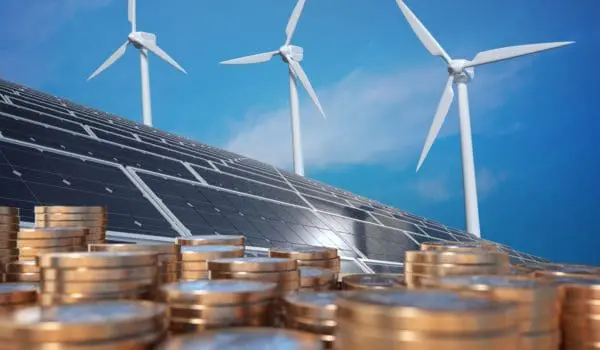Applications for the low-income communities bonus credit program (the “Bonus Program”) under Internal Revenue Code (IRC) Section 48(e) for the Clean Electricity Investment Tax Credit, as established by the Inflation Reduction Act of 2022, will open at 9:00 a.m. ET on October 19, 2023. Prospective applicants and interested stakeholders should prepare to submit their applications through the Department of Energy’s online portal (the “DOE Portal”) by November 18, 2023.
Applications submitted within the first 30 days will be treated as submitted on the same date, while applications submitted after the first 30 days will be considered on a rolling basis. The Bonus Program provides a 10% or 20% boost to the energy investment tax credit for which applicants would otherwise be eligible as determined under IRC Section 48(a) (the “Investment Tax Credit”) for qualified solar or wind facilities, including facilities installed in low-income communities or on a low-income residential building subsidized by the Low-Income Housing Tax Credit (LIHTC) under IRC Section 42.
Accordingly, the Bonus Program could potentially enhance the Investment Tax Credit available for an eligible solar facility installed on a qualifying LIHTC project from a 30% base credit (assuming the facility is under 1 megawatt (MW) or prevailing wage and apprenticeship requirements are met) to a 50% credit due to the maximum 20% boost under the program. Moreover, the amount of the Investment Tax Credit no longer reduces eligible basis for LIHTC purposes, and the cost of the solar facility can be included in LIHTC eligible basis.
Background
In February 2023, the Department of the Treasury and the Internal Revenue Service (IRS) released Notice 2023-17 to establish the Bonus Program, providing initial guidance for potential applicants seeking to file for the calendar year 2023 environmental justice solar and wind capacity limitation under IRC Section 48(e) (“Capacity Limitation”). In June 2023, Treasury and the IRS published a notice of proposed rulemaking supplementing the guidance originally provided in Notice 2023-17. The proposed rules outlined specific application procedures, additional allocation criteria, applicable definitions, and the necessary information required to apply for an allocation of Capacity Limitation. A summary of the proposed rules can be found in our previous article. In August 2023, Treasury and the IRS released final regulations and IRS Revenue Procedure 2023-27, which provide additional guidance regarding the Bonus Program and its application process, program requirements, and methodology for allocating bonus credits.
For 2023, the Bonus Program will allocate 1.8 gigawatts of Capacity Limitation through a competitive application process across four project categories (listed below) of qualified solar or wind facilities with maximum output of less than five megawatts. The Bonus Program provides either a 10% or 20% increase to the Investment Tax Credit for such solar or wind facilities depending upon the applicant’s project category.[1]
- Category 1: low-income community facilities (700 MW)
- Category 2: facilities on Indian land (200 MW)
- Category 3: qualified low-income residential building projects (200 MW)
- Category 4: qualified low-income economic benefit projects (700 MW)
Application Process Overview
The following is a brief overview of the application process and its associated timeline for the Bonus Program.
- Registration: Each individual completing an application on behalf of an applicant must register for a Login.gov account to access the applicant portal and complete portal registration.
- Application: On October 19, 2023, at 9:00 a.m. ET, the DOE will begin accepting applications across all four categories of the Bonus Program. Applicants can apply for an allocation of the Capacity Limitation by providing facility details and submitting other required documentation through the DOE Portal. November 18, 2023, is the last day of the 30-day application window. Applications submitted within this 30-day window will be treated as submitted on the same date and at the same time. After the 30-day window closes, submissions will be considered on a rolling basis.
- DOE Review: The DOE will conduct an initial review of the applications and provide recommendations to the IRS. Applicants should be aware that DOE may request additional information as part of its review, and responses to these requests must be submitted via the DOE Portal within 21 business days of the request date, or the application may be rejected.
- IRS Review and Determination: The IRS will review recommendations made by DOE and make allocation determinations. It is anticipated that the IRS will attempt to issue allocation letters as soon as possible this calendar year. Allocation letters will be made available on the DOE Portal.
- Placed in Service Requirements: Once an applicant has received an allocation of Capacity Limitation for a qualifying facility, the underlying Investment Tax Credit and the percentage increase resulting from the allocation are not determined until the facility has been placed in service. Accordingly, applicants that receive an allocation of Capacity Limitation will need to report to DOE the date the facility was placed in service, in addition to satisfying other documentation and attestation requirements. Potentially, qualifying solar and wind facilities may not be placed in service prior to receiving a Capacity Limitation allocation if the applicant intends to claim the percentage increase under the Bonus Program.
Placed in Service Requirements
As noted above, for any facility that is allocated Capacity Limitation, the facility owner is required to report the date the eligible property was placed in service—and submit additional information and documentation—through the DOE Portal. DOE will review the documentation to determine if the facility meets the requirements to claim the increased energy credit percentage and provide a recommendation to the IRS. Based on the DOE’s recommendation, the IRS will determine whether the facility should retain its allocated Capacity Limitation or be disqualified. Until the IRS has confirmed eligibility through the DOE Portal, the facility owner (or a partner or shareholder in the case of a passthrough entity) may not claim the increased credit amount or make an election to transfer the credit under IRC Section 6418 or, if eligible, make an elective payment election under IRC Section 6417.
Notably, if there are capacity modifications to the solar or wind facility at the time such facility is placed in service, the increased credit amount will be impacted. If the facility size is larger than the allocated Capacity Limitation but still below the 5 MW AC requirement, the 10% or 20% increase will be subject to a reduction factor (Capacity Limitation Allocated (kW)/Total Nameplate Capacity Installed (kW)). On the other hand, if the facility size is reduced by no more than the greater of 2kW or 25% of the allocated capacity, the percentage award is maintained. Larger reductions will result in disqualification.
Program Resources
For your convenience, we have included the following links to additional government resources regarding the Bonus Program and the application process:
- A Public Mapping Tool (available at Mapping Tool for 48e Low-Income Community Bonus Credit Program (arcgis.com) has been created showing census tracts that meet Category 1 eligibility, Persistent Poverty Counties, and the CEJST Energy category.
- Information on the eligible covered housing programs for Category 3 can be found here: Microsoft Word – Category 3 Eligible Housing Programs_UST (energy.gov)
- Household Income Limits for Category 4 can be found here: Income Limits | HUD USER
- You can also reach out to the DOE support desk at EJBonusSupport@hq.doe.gov
- A checklist for applicants can be accessed here: Microsoft PowerPoint – 48(e) Applicant User Checklist DOE (energy.gov)
Frost Brown Todd counsels investors, developers, lenders, and other key stakeholders on tax credit transactions across the country. We stay at the forefront of all legislative efforts affecting the industry, and we are ready to assist clients with navigating the changing legislative environment. For more information, please contact the authors of this article or any attorney from Frost Brown Todd’s Multifamily Housing team or Tax practice.
[1] Category 3 and 4 facilities are eligible for a 20-percentage point credit increase. Category 1 and 2 facilities are eligible for a 10-percentage point credit increase.

